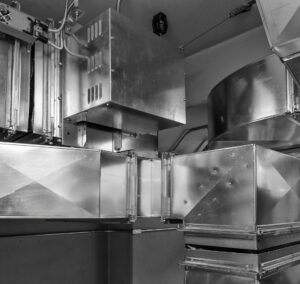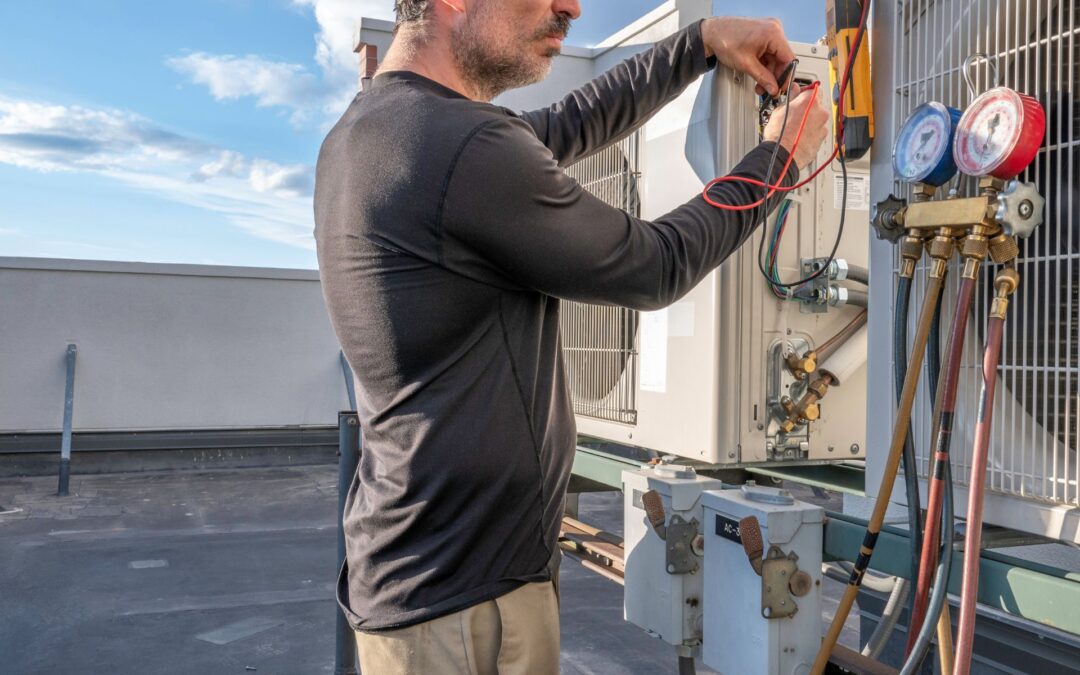Your HVAC system relies on big and small parts working together to ensure optimal airflow throughout your home. One part malfunctioning or being absent can throw everything off kilter. One part of the HVAC system you may have never given thought to is the dampers. While small, HVAC dampers play a significant role in regulating your home’s indoor air quality and temperature. To learn more about HVAC dampers, how they work, and the different types available, continue reading this blog.
What Are HVAC Dampers?
While air vents are just an entry point for your HVAC system, the HVAC dampers do the actual heavy lifting. They are responsible for controlling airflow and maintaining consistent temperature levels in your home without overworking your HVAC system. They can be moved to any part of your HVAC system and are often distributed based on designated zones within your home. When they are open, they allow air to travel through; when closed, they redirect airflow to another part of your home. Some dampers require hands-on, manual adjustment, while others can be automatically controlled with advanced wireless technology.

5 Different Types Of HVAC Dampers
HVAC dampers are found in all kinds of buildings, residential and commercial. For the purposes of this blog, the focus will be on different types of residential HVAC dampers. Here are just five of the many kinds of HVAC dampers you will find in a residential building:
1. Butterfly Flat Dish Dampers
Butterfly flat dish dampers consist of plates that rest on the hinges in a way that makes them look like butterfly wings. They are easy to install and can move air in one direction. They are usually found in HVAC systems that use round ducts and are great for preventing backdrafts.
2. Blade Dampers
There are two subcategories of blade dampers: opposed and parallel. Opposed blade dampers have multiple blades that move automatically, while parallel blade dampers are placed parallel to one another. For better control over airflow, many homeowners opt for opposed blade dampers for their HVAC system. However, if they want a consistent airflow stream to be maintained, parallel blade dampers are preferable.
3. Fire Dampers
Fire dampers are, as the name suggests, manufactured to prevent fires. They are found in single and multi-family homes, whether it’s a traditional house or an apartment complex. They are usually automatic since they come with sensors that allow them to close up the moment any smoke or flame is detected. These dampers will continue to work optimally as long as they receive regular maintenance.
4. Louver Dampers
Of all the HVAC dampers on the market, louver dampers are the most versatile. In other words, they can fit all kinds of duct sizes, making them the most commonly found dampers in homes. They are considered very effective where redirecting air is concerned, and they automatically close when the pressure gets too high.
5. Zone Dampers
Finally, zone dampers are highly advanced, as they are connected to your thermostat and automatically adjust based on those settings. In other words, adjusting the thermostat in one area of your home will signal the zone dampers to adjust for that particular room or space. This feature makes zone dampers a very convenient option for homeowners.
Get The Right HVAC Dampers For Your Home Today!
Now that you’re familiar with five of the most commonly used HVAC dampers, you probably want to get started with installing the right ones for your home. When you hire an experienced HVAC technician to install the dampers, you will reap the benefits of having someone with the right equipment and an in-depth understanding of how these systems work. As for which professional you should call, reach out to our team at Fresh Air Duct Cleaning today.

